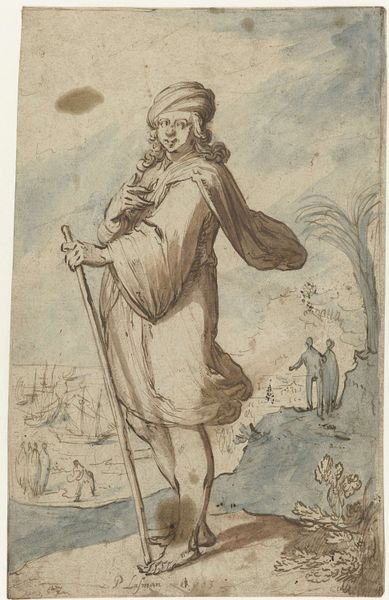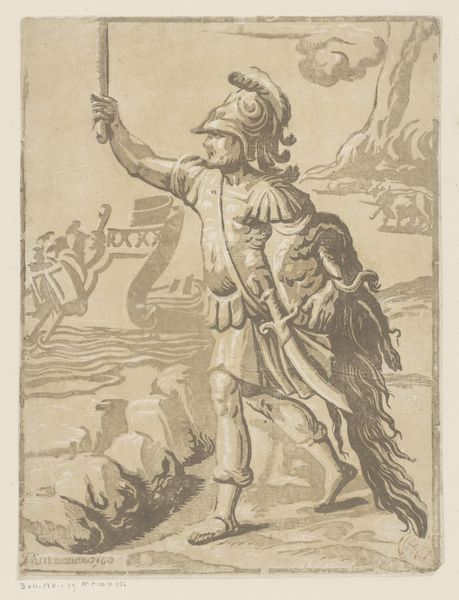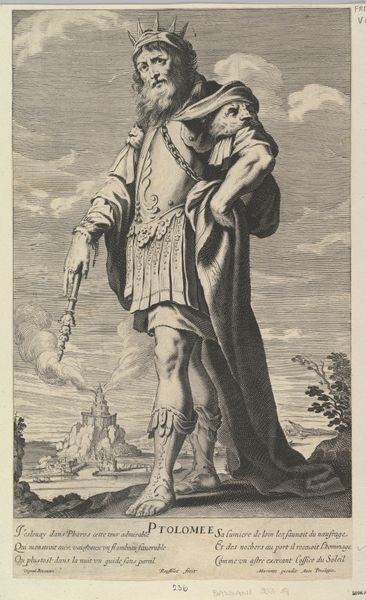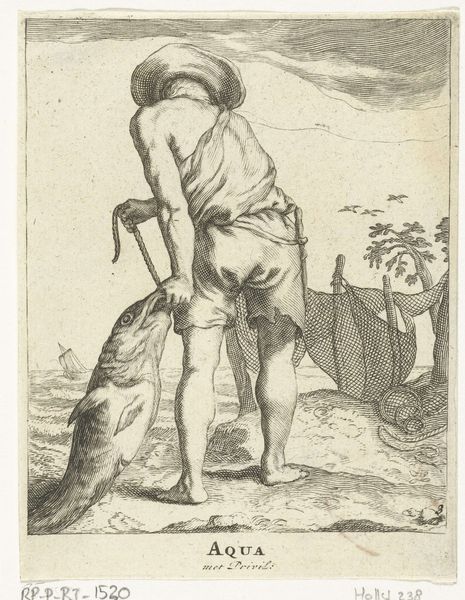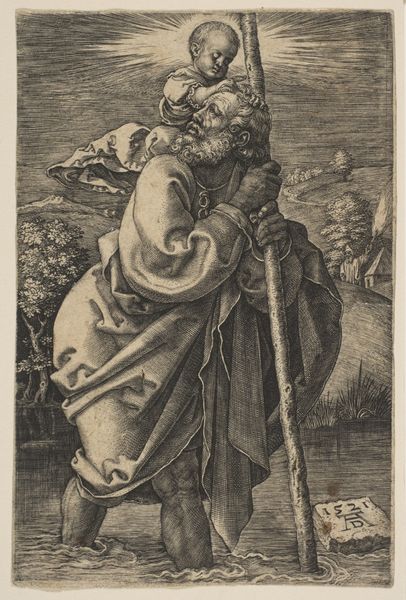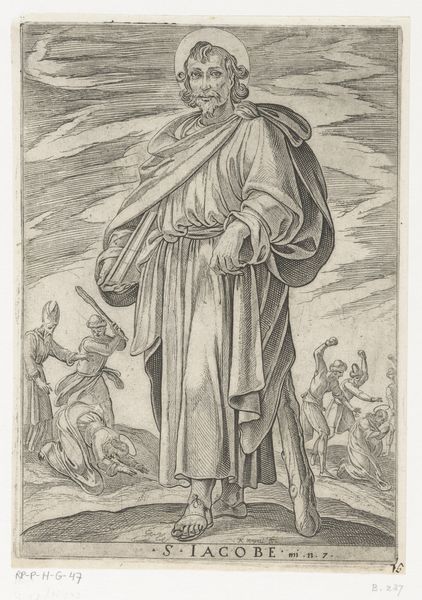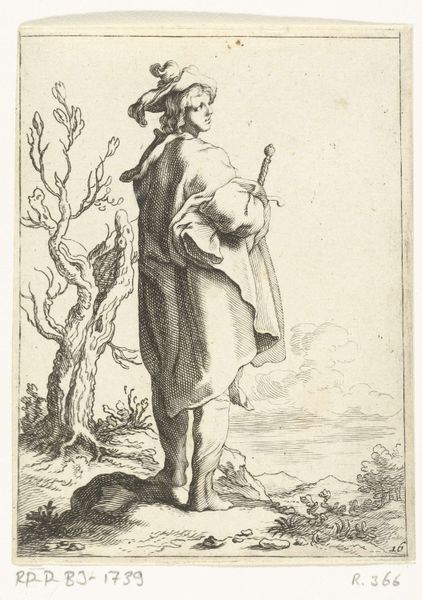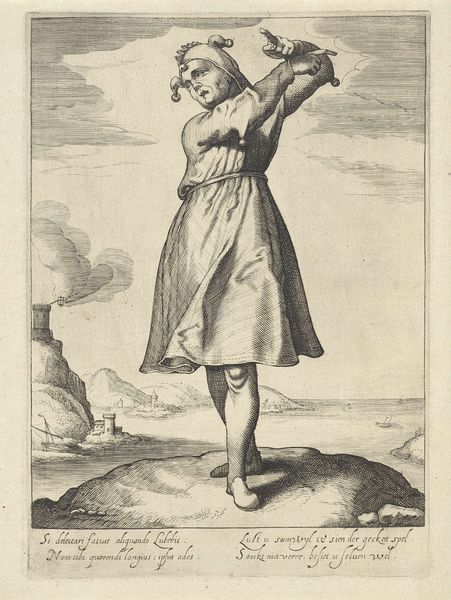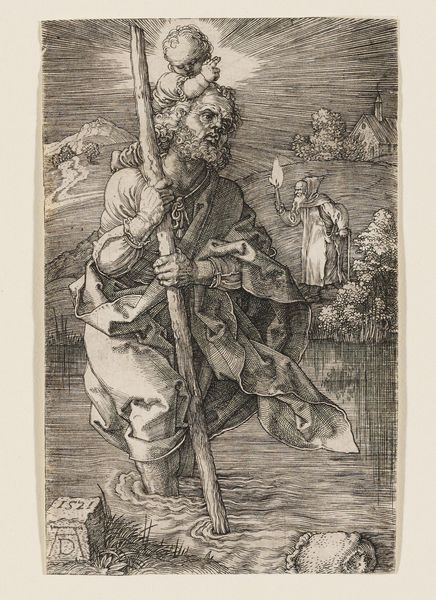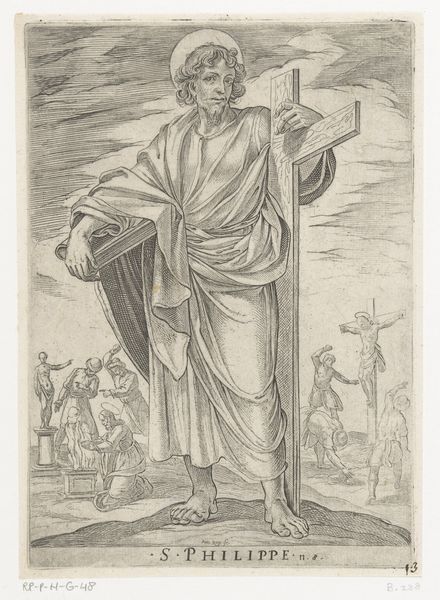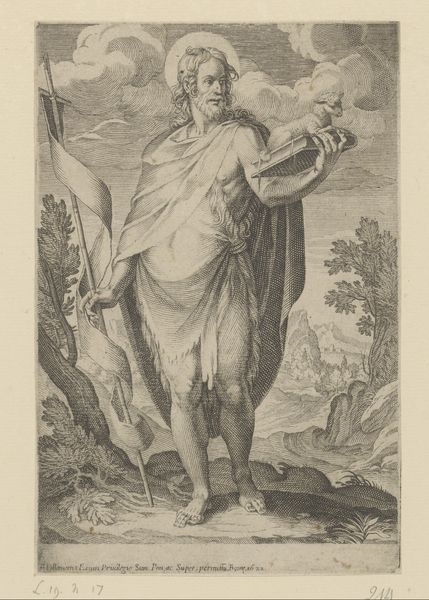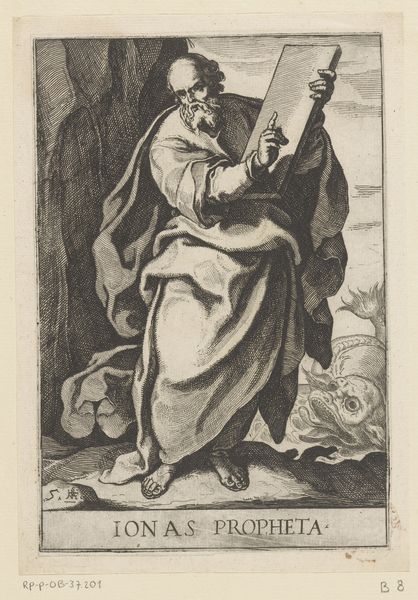
drawing, paper, watercolor, ink
#
portrait
#
drawing
#
paper
#
11_renaissance
#
watercolor
#
ink
#
coloured pencil
Dimensions: height 268 mm, width 170 mm
Copyright: Rijks Museum: Open Domain
This drawing by Pieter Lastman, created around 1603, depicts a standing figure adorned with a turban. Turbans in 17th-century European art often symbolized the exotic "Orient," reflecting a fascination with foreign cultures, yet also hinting at a sense of otherness. The figure's open, gesturing hand is a motif that echoes through art history. We see it in classical oratory poses, like those of Roman emperors, and repeated in religious art as a symbol of teaching or benediction. Consider how this gesture has morphed over time, from a symbol of divine authority to one of secular command, each era layering its own meaning onto it. This hand extends, beckoning not just towards the painted background, but towards us, inviting a dialogue across centuries. The power of the image lies in its ability to tap into our collective memory, to trigger associations that resonate on a subconscious level. It is a vivid illustration of how symbols migrate across time, continually reshaped by the currents of history.
Comments
rijksmuseum about 2 years ago
⋮
Lastman drew this sympathetic young man wearing a turban and a graceful tunic in two different poses at the beginning of his career. The influence of the Mannerist style of his teacher Gerrit Pietersz can still be discerned: notice the elongated, elegant fingers and pointed toes. The inscription ‘P. Lastman’ on both sheets was added by their later owner Gerard ter Borch the Elder, with whom Lastman became acquainted in Rome.
Join the conversation
Join millions of artists and users on Artera today and experience the ultimate creative platform.
